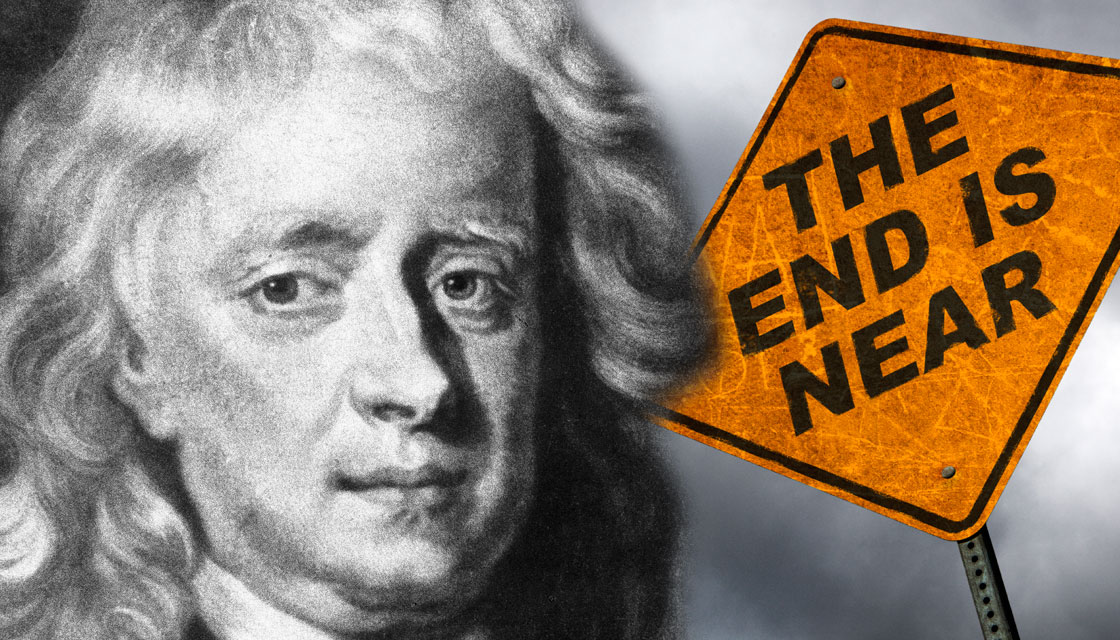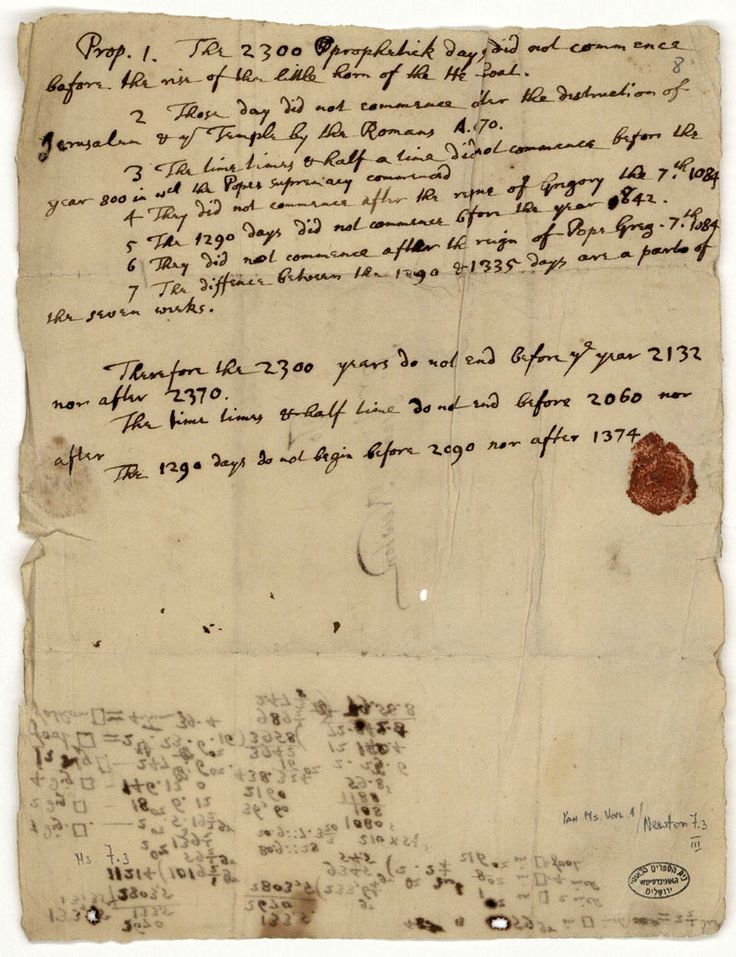![]()

Peculiarities make life… interesting.
Next week, we’ll be announcing a major new book on exactly such things.
For now, let’s look at a famous man who made predictions both inside and outside the realm of religious prognostication.
In this case, we refer you to the precognitive Sir Isaac Newton.
As a blogsite called Open Culture puts it:
“In 1704, Isaac Newton predicted the end of the world sometime around (or after, ‘but not before’) the year 2060, using a strange series of mathematical calculations. Rather than study what he called the ‘book of nature,’ he took as his source the supposed prophecies of the Book of Revelation. While such predictions have always been central to Christianity, it is startling for modern people to look back and see the famed astronomer and physicist indulging them. For Newton, however, as Matthew Stanley writes at Science, ‘laying the foundation of modern physics and astronomy was a bit of a sideshow. He believed that his truly important work was deciphering ancient scriptures and uncovering the nature of the Christian religion.'”
Continued the commentary: “Over three hundred years later, we still have plenty of religious doomsayers predicting the end of the world with Bible codes. But in recent times, their ranks have seemingly been joined by scientists whose only professed aim is interpreting data from climate research and sustainability estimates given population growth and dwindling resources. The scientific predictions do not draw on ancient texts or theology, nor involve final battles between good and evil. Though there may be plagues and other horrible reckonings, these are predictably causal outcomes of over-production and consumption rather than Divine wrath. Yet by some strange fluke, the science has arrived at the same apocalyptic date as Newton, plus or minus a decade or two.”

When they say roughly the “same apocalyptic date,” take for example a program developed at MIT by computing pioneer and systems theorist Jay Forrester, whose model of global sustainability, one of the first of its kind, predicted civilizational collapse in 2040. “What the computer envisioned in the 1970s has by and large been coming true,” claims Paul Ratner at Big Think.
Those predictions include pollution levels, “worsening quality of life,” and “dwindling natural resources.” The graph spans the years 1900 to 2060. Sounds at times a bit too much like the population-bomb Cassandras. “Quality of life” begins to sharply decline after 1940, and by 2020, the model predicts, the metric contracts to turn-of-the-century levels, meeting the sharp increase of the ‘Zed Curve’ that charts pollution levels,” says the blogger, for your discernment. (If you want to get deeper into it, but from a mystic’s standpoint, see the current “special report.”)
Concludes the piece: “All this doom and gloom it’s worth bearing in mind that models of the future are not, in fact, the future. There are hard times ahead, but no theory, no matter how sophisticated, can account for every variable.”
True enough, especially the variable called prayer; especially the variable called God.


